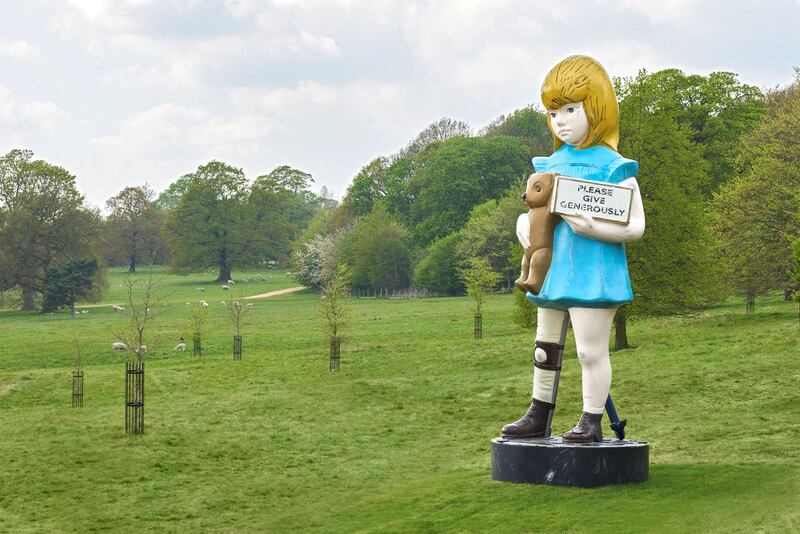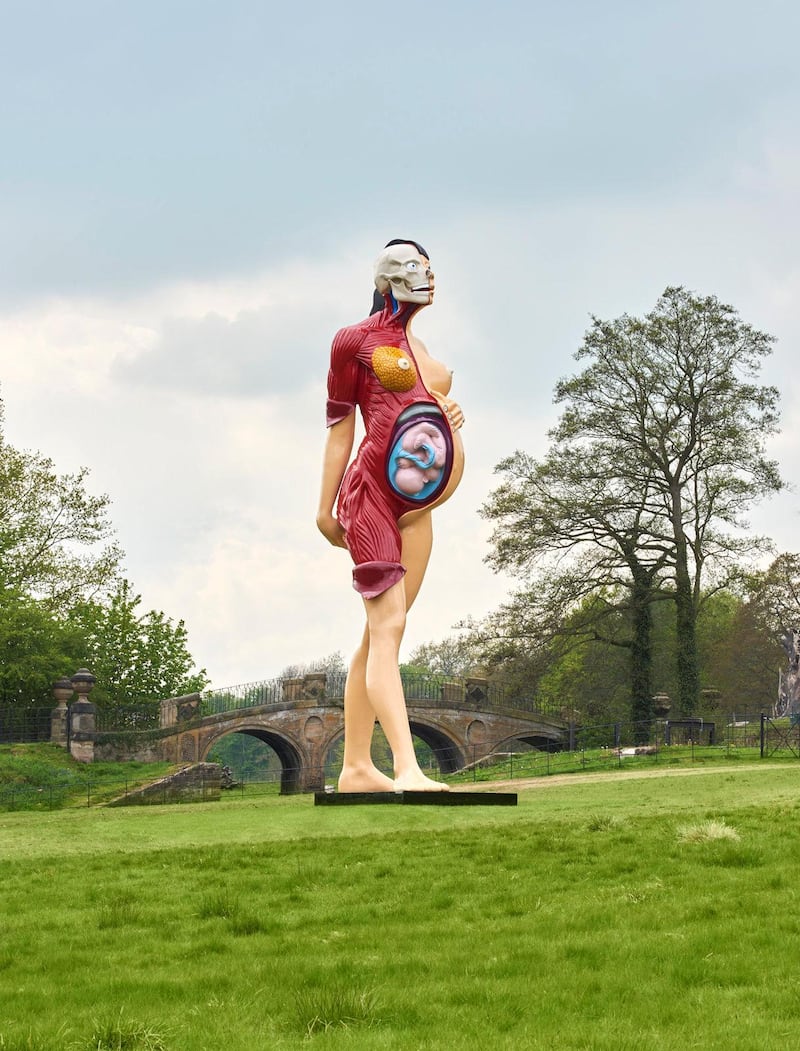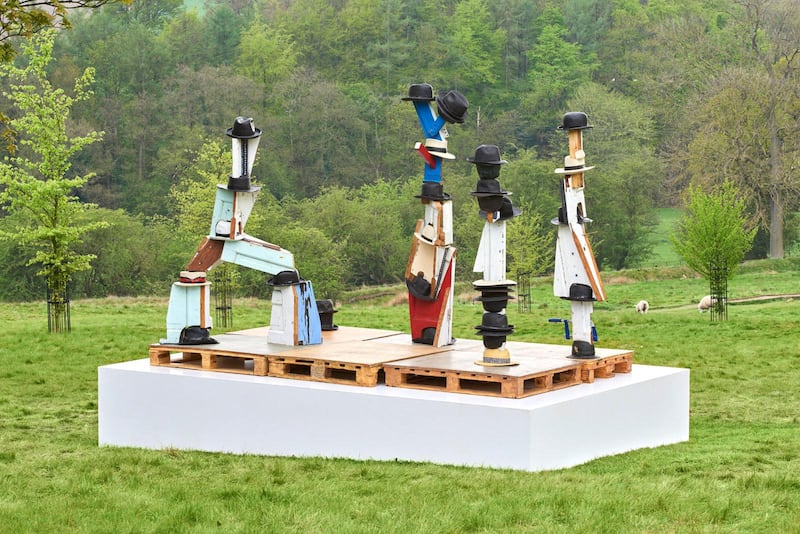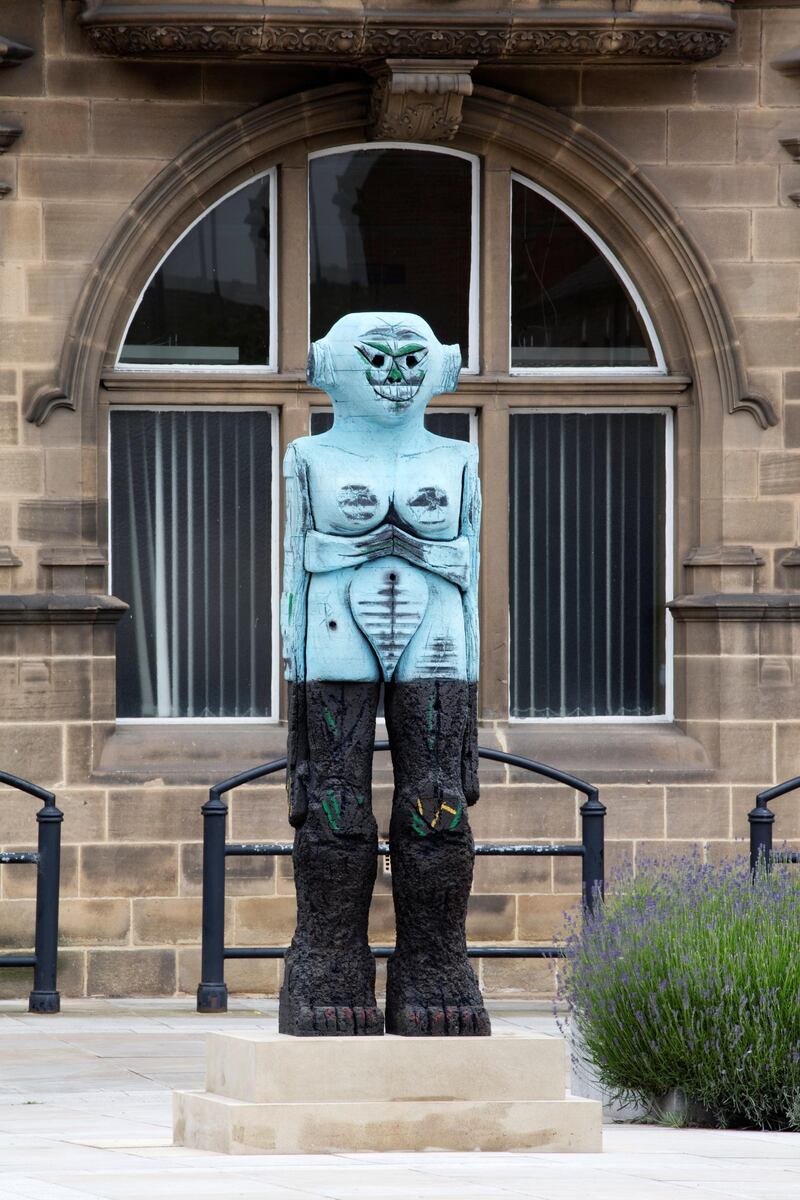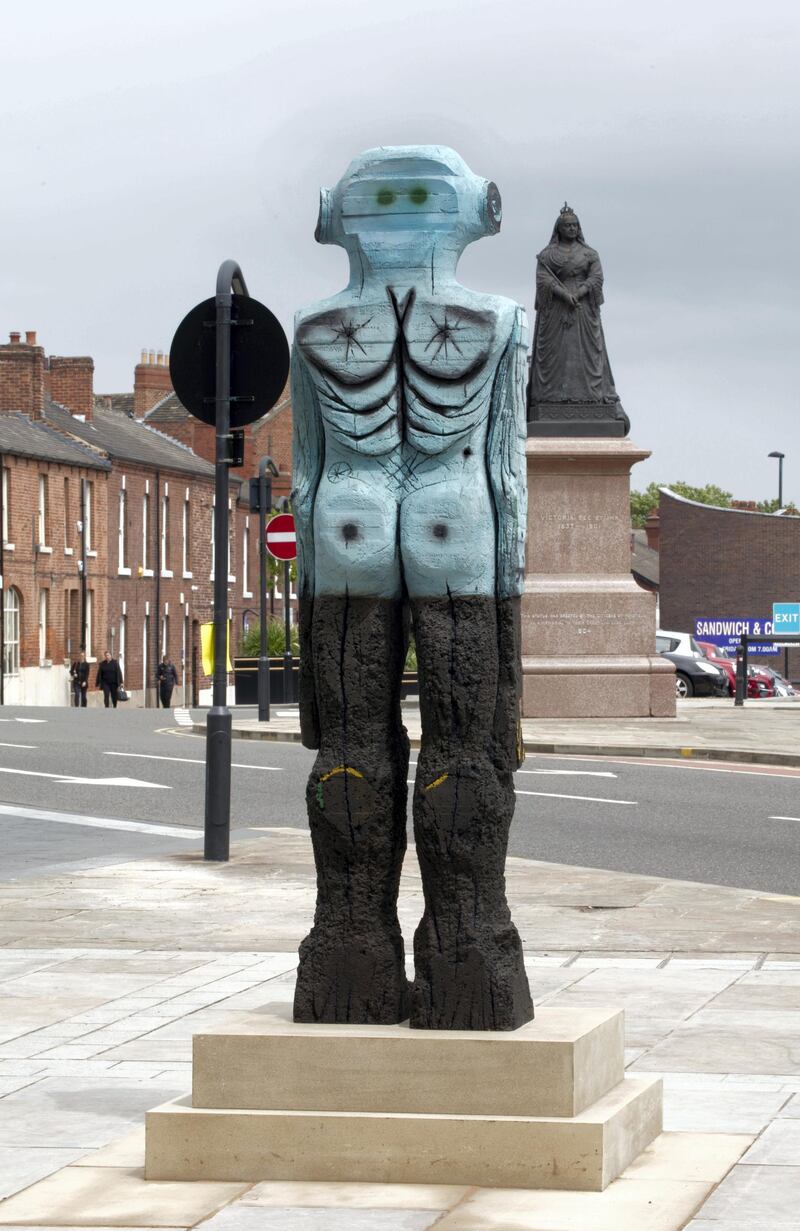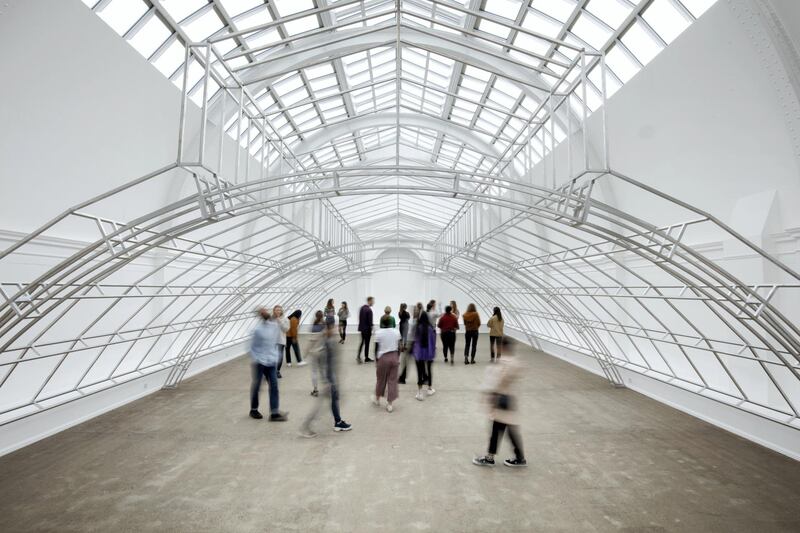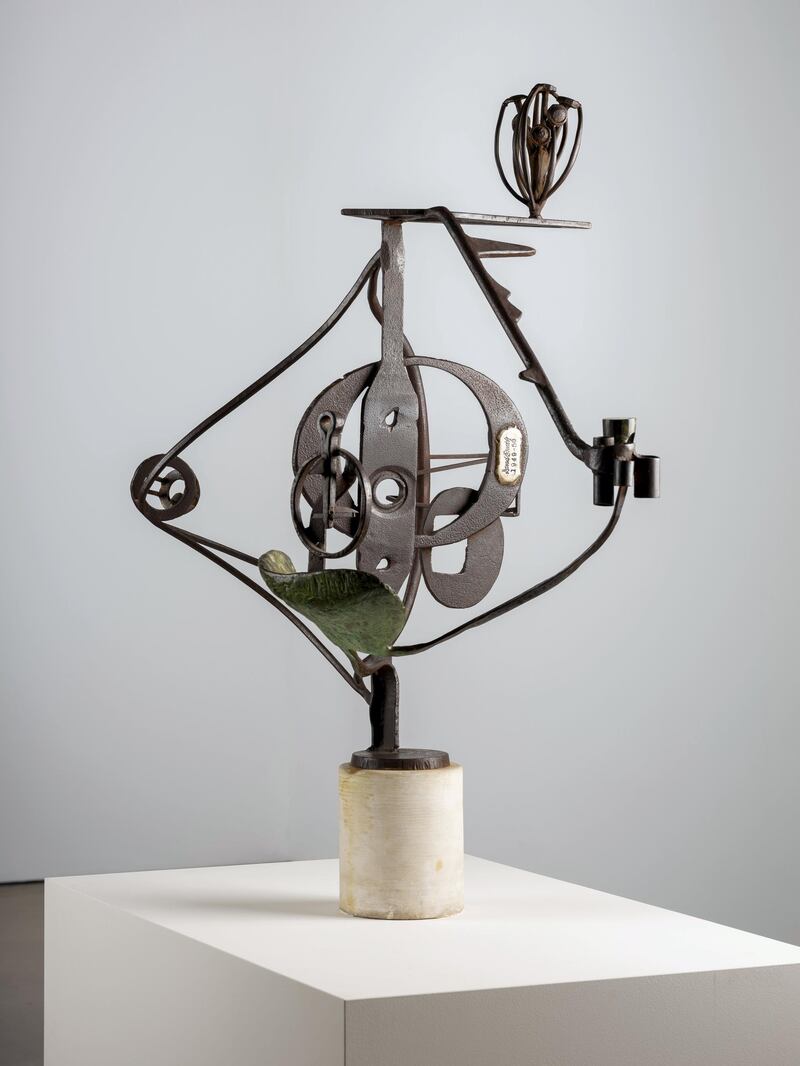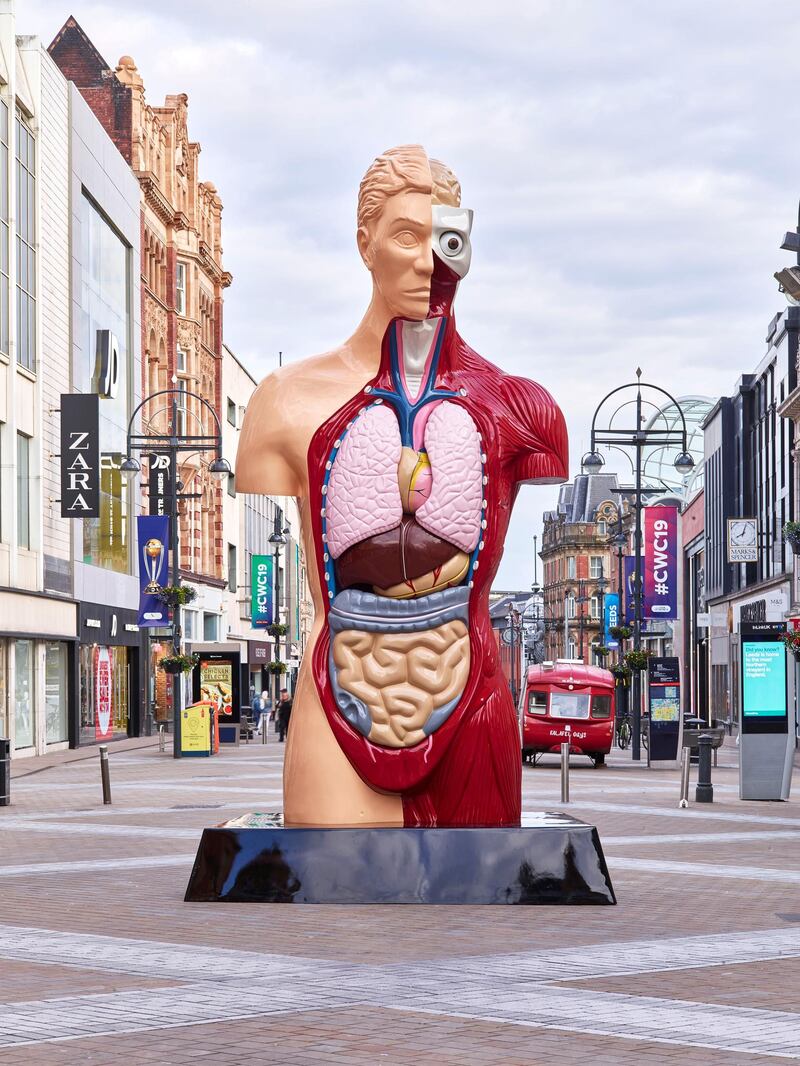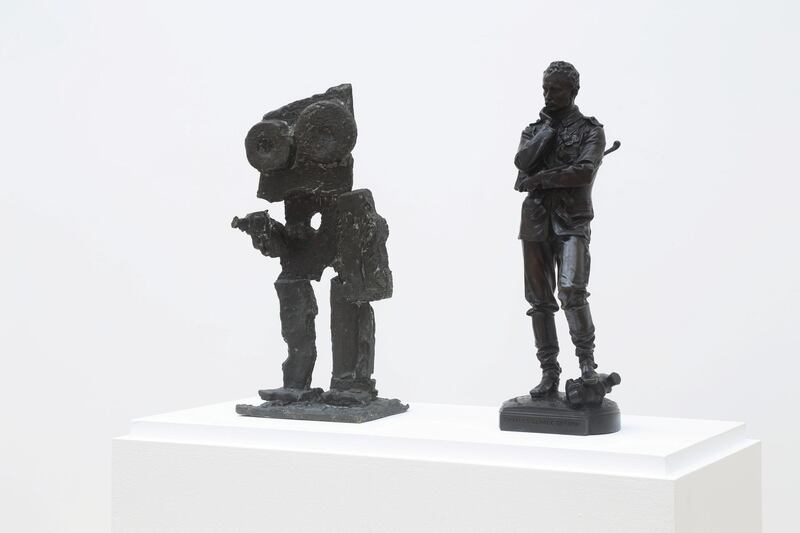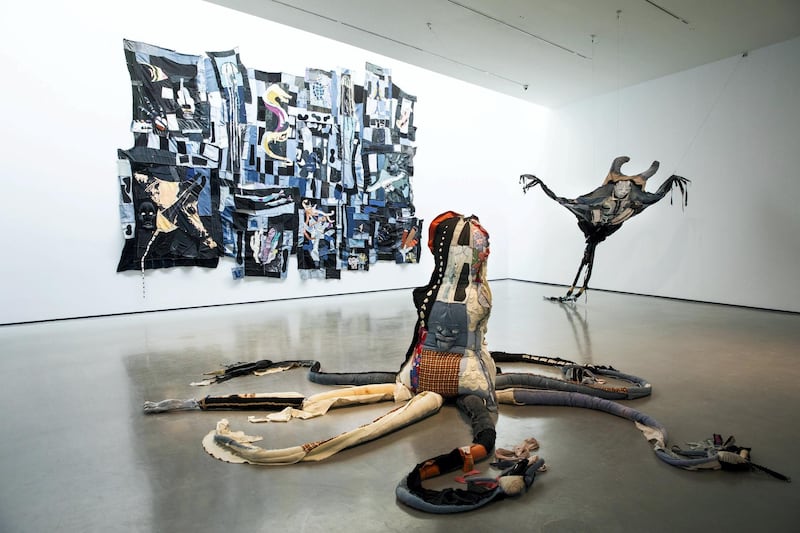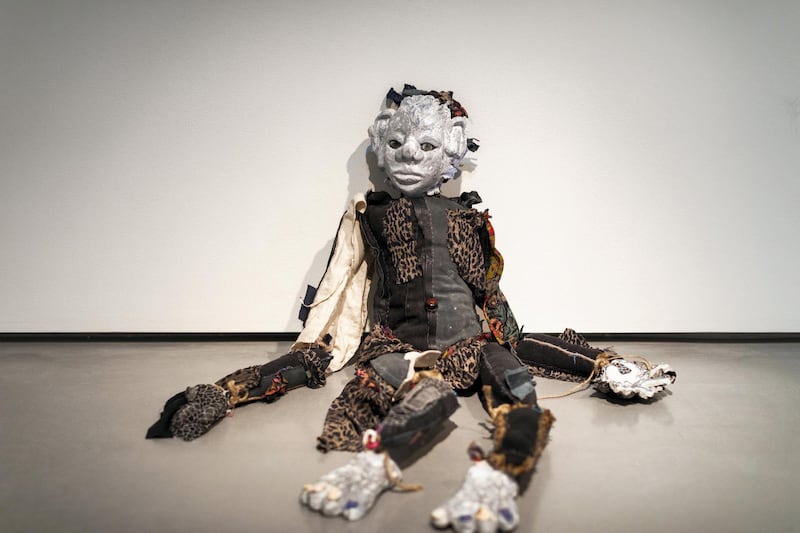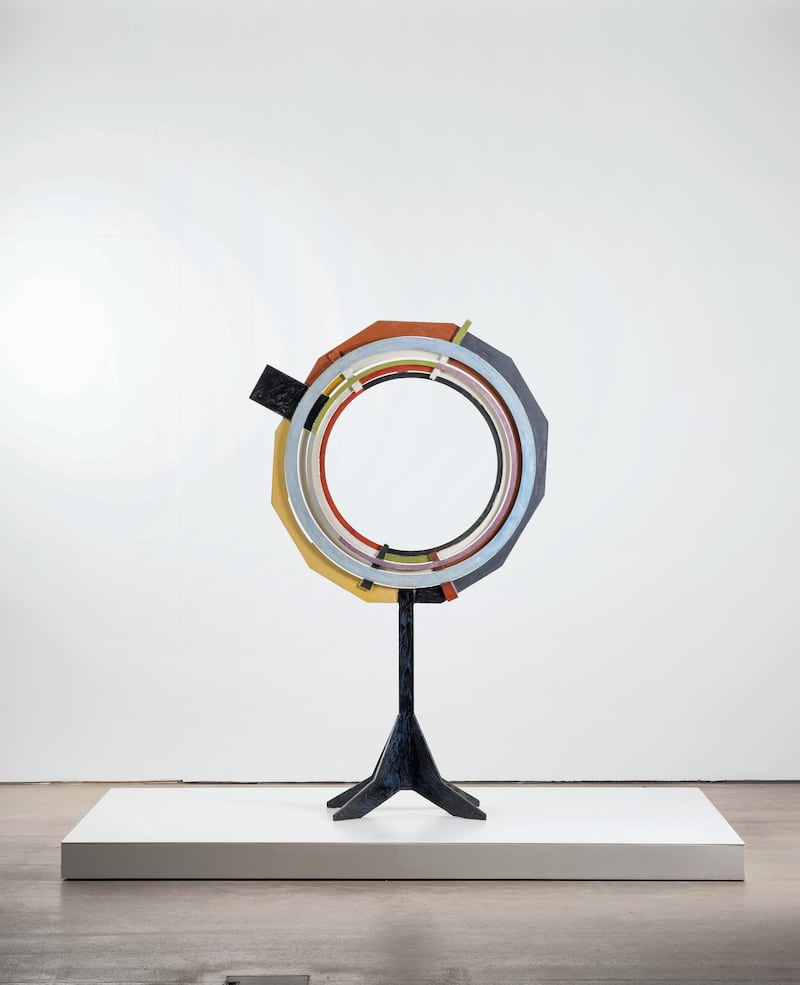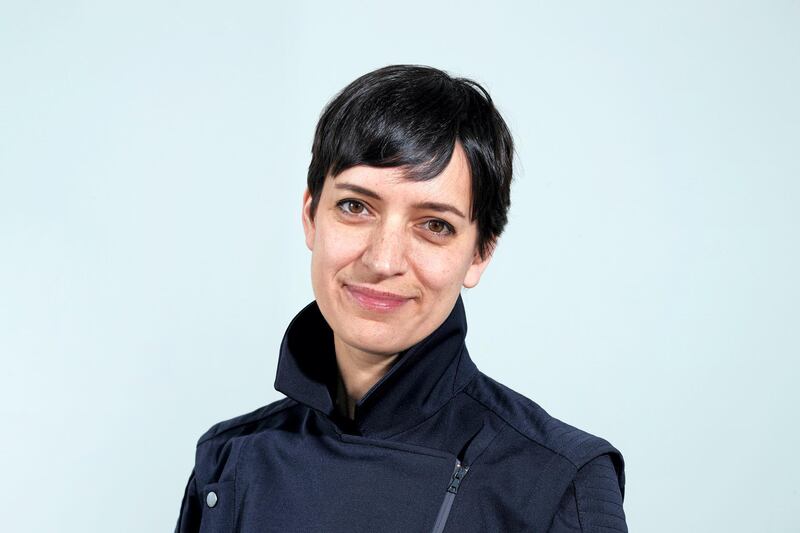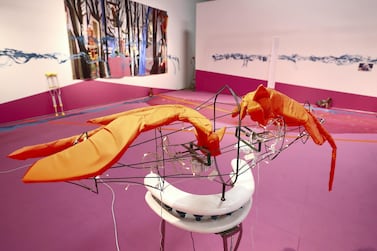Set over about two square kilometres of hilly fields, woodland, lakes and bridges in West Yorkshire, England, Yorkshire Sculpture Park is filled with huge artworks across its vast, undulating landscape. Amid the roaming sheep and cattle, visitors will find Henry Moore bronzes, Barbara Hepworth's Family of Man and site-specific creations by Andy Goldsworthy and James Turrell, among others. This month, several new cast members joined this illustrious coterie, while elsewhere in the county, museums, public squares and shopping thoroughfares are hosting special exhibitions, or have been temporarily transformed through sculpture.
What's on display at the new festival
The inaugural Yorkshire Sculpture International, a new 100-day festival, is taking place at Leeds Art Gallery, the Henry Moore Institute in Leeds, the David Chipperfield-designed Hepworth Wakefield and Yorkshire Sculpture Park. At the latter, several eye-catching Damien Hirst pieces have been installed, including his 10-metre-tall Virgin Mother, which when viewed from one side reveals a foetus curled up in the womb. "Sculpture is special because of the way you experience it, the way you can walk around it and how it changes as you do so; it's an expansive medium and we wanted to show that with this project," says Yorkshire Sculpture International producer Jane Bhoyroo.
The festival is ambitious in scope, exploring the medium through a wide and unfettered lens. Eighteen artists from 13 countries, 10 of whom are women, are featured, and a series of exhibitions respond – loosely, in most cases – to a "provocation" by British artist Phyllida Barlow, who says "sculpture is the most anthropological of the artforms".
It's a statement that lends itself to several interpretations, as Andrew Bonacina, chief curator at the Hepworth Wakefield sculpture gallery, explains. "Phyllida talks about what it means to put something in the world, about that basic human impulse to make something and what that does and how it reflects on society, politics and the world we live in," he says.
The best example of this social, political or even anthropological dimension is probably Rashid Johnson's deceptively simple Shea Butter Three Ways, on show at the Henry Moore Institute. He displays mounds of the raw, unprocessed ingredient on three trestle tables, one of which features abstract busts made from the substance, another holds geometric forms, while the third is covered in broken blocks of the waxy butter and invites visitors to mould it into shapes or use it on their skin. The raw and messy presentation highlights the varied uses of the ingredient, but also the "exoticised" way in which shea butter is marketed in the West.
At the Hepworth Gallery, the notion of materiality and truth of material objects is explored, a subject artists Hepworth and Moore were preoccupied with, says Bonacina. "It's about releasing materials from their use values, but doing that in a way to reveal new ideas the artists want to explore," he says.
From a fragrant installation of rice, stone and ash by German artist Wolfgang Laib to the tactile, hand-stitched wall hangings and figures of Canadian-Jamaican artist Tau Lewis, or the sound performances of Lebanese artist Tarek Atoui and his use of new and invented instruments, materials are released from their primary functions to varying degrees and with mixed results.
Reaching new audiences
A highlight in terms of this theme, and in general, is an installation by Nairy Baghramian, an Iranian artist who lives in Berlin. Her work consists of several sculptural pieces from her Maintainers series, as well as a new piece. Raw cast aluminium sheets, smooth wax forms in a beautiful palette of mostly pastel colours, and other materials such as cork and styrofoam, are used to create pieces that function both individually and as collective assemblages. The space is organised and mediated subtly but precisely, objects look both monumental and yet unfinished and strangely delicate (wax would normally be used to polish these items, not turned into sculptural forms).
A few of the artworks installed for the festival are also located in the public realm. "A big part of putting sculptures outdoors is about reaching new audiences, creating debate and getting people to think about what sculpture is," says Bhoyroo.
One of these pieces is Receiver by Pakistani artist Huma Bhabha, who now lives in the US. It's a mysterious, yet tactile and playful, alien-like figure made out of painted and patinated cast bronze that stands in front of Wakefield's ornate Victorian County Hall. The square contains a statue of Queen Victoria and a memorial to the First and Second World Wars, with which it "dialogues and creates a triangle", explains Bhabha. "I chose the location because it is a crossroads and the piece looks like it could have walked or landed here," she says.
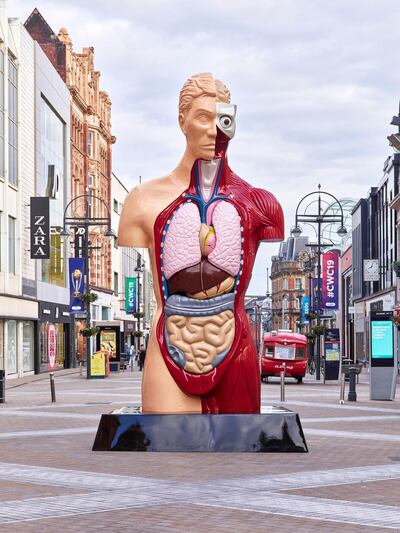
In one of the main shopping streets in Leeds, Hirst's six-metre-tall Hymn – from a series made between 1999 and 2005 – has been installed. A partly anatomical male torso in painted bronze, it casts one human and one unnerving fleshless eye on passers-by. Another new public realm commission is located indoors, but is no less powerful because of it. Turkish artist Ayse Erkmen has created an inhabitable skeletal sculpture out of aluminium for Leeds Art Gallery's Central Court.
The light, yet complex, structure recreates the museum's double-height original barrel-vaulted glass roof that was hidden by a false ceiling put up in the 1960s and only removed in 2016 during renovation work. Her installation marks where the ceiling once existed and invites people to appreciate once more the real roof above and the space below that is filled with light and architectural details.
Back at the Yorkshire Sculpture Park, there's a major retrospective of hugely influential 20th-century Abstract Expressionist David Smith. It includes previously unseen pieces from his Bolton Landing home in Upstate New York, and displays both early works made of found materials, as well as monumental welded metal sculptures that are displayed indoors and in the open. The park's 18th-century deconsecrated chapel has also been transformed with a new version of an installation by South Korean artist Kimsooja, To Breathe. By covering the chapel's floors in mirrors and the windows in diffraction film, myriad kaleidoscopic and iridescent effects are created that move across the space, turning solid surfaces into fluid and shimmering ones.
Things to consider for future festivals
Considering this is the first Yorkshire Sculpture International and was put together in only two years, it's a remarkable cultural achievement. The short preparation time also makes it easier to overlook the areas where it feels rushed or less well-considered. An example of this that is the room in the Hepworth Gallery dedicated to early works by artists Hepworth and Moore, shown alongside pieces by American artist Jimmie Durham. It is too busy with objects for all of them to be appreciated properly. Another criticism may be the overabundance of works by Hirst. He may have grown up in Leeds and is certainly a big name, but the festival includes eight of his works, none of them new and two in the most prominent spots in the city. That won't be a draw for many people.
But perhaps the biggest problem is the absence of a timely or overarching idea, or a guiding curator to draw it all together and make the project feel more focused. The lack of an external curator, however, also has a positive effect, because it ensures the project is embedded in the area and in the institutions that have put it together and that are hosting it with clear enthusiasm and passion. The organisers have curated an impressive engagement programme aimed at artists in Yorkshire, as well as about 2,000 students from local schools and universities, and are serious about creating a legacy. But perhaps future projects could take a stronger curatorial line.
What Yorkshire Sculpture International does successfully, however, is cast a bright light on an often underrated but hugely accessible medium. It raises the profile of contemporary sculpture as well as a part of the world – the birthplace of pioneering artists Hepworth and Moore, no less – that is incomparably rich in sculptural history. "We are already really well known as a UK destination for sculpture, but we want to put the area on the international map," says Bhoyroo. With this festival that wish is, quite rightly, certain to be granted.
Yorkshire Sculpture International runs until September 29. For more, visit www.yorkshire-sculpture.org
